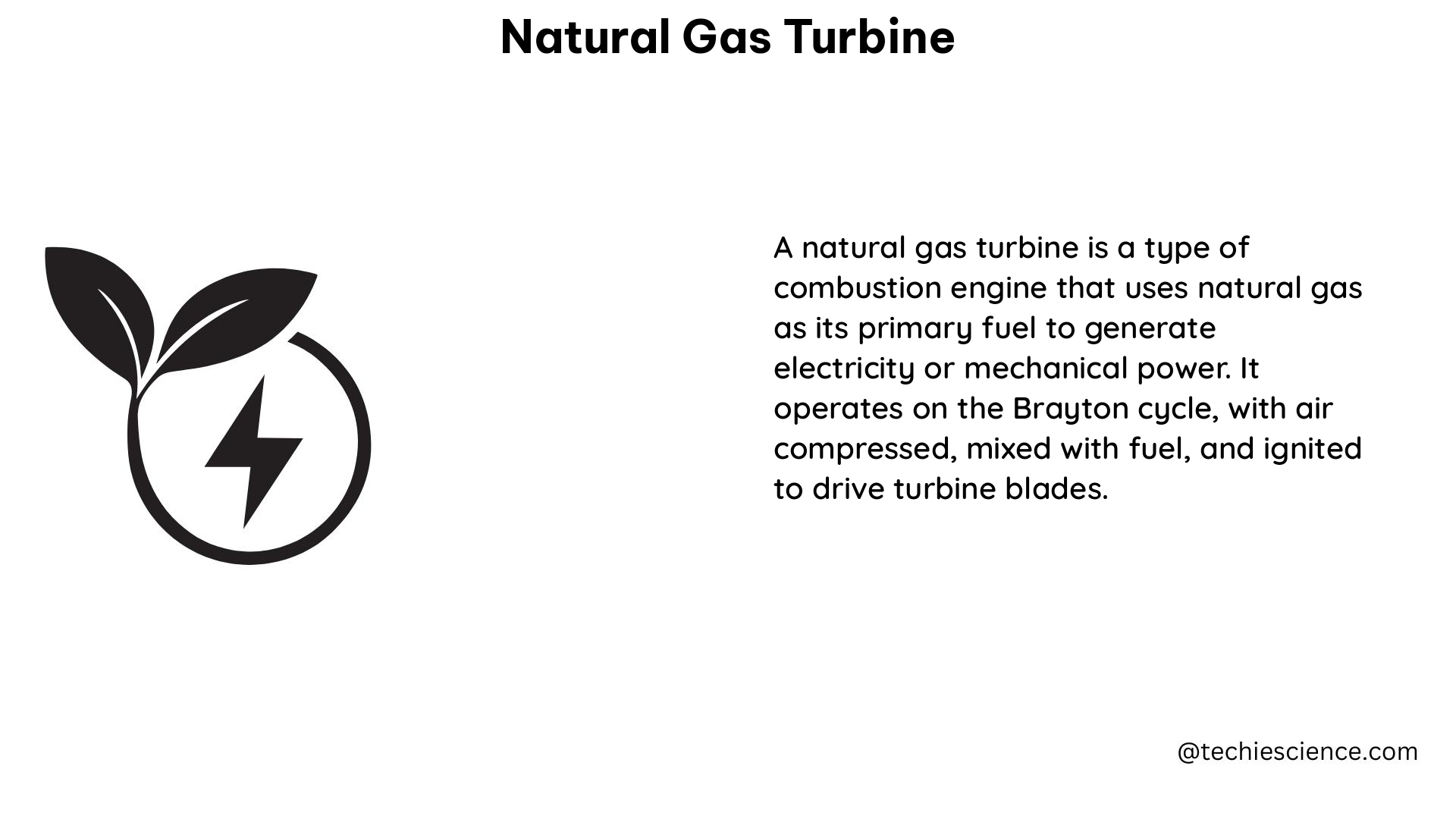Natural gas turbines are complex machines that convert the chemical energy of natural gas into mechanical energy, which can then be used to generate electricity or provide mechanical power. These turbines are widely used in power generation, industrial processes, and transportation applications due to their high efficiency, low emissions, and versatility. In this comprehensive guide, we will delve into the technical specifications of natural gas turbines, providing a detailed and data-driven overview to help you understand these remarkable machines.
Power Output and Efficiency
The power output of natural gas turbines can range from a few kilowatts to hundreds of megawatts, depending on the size and design of the turbine. For example, the Siemens SGT-200 Industrial Gas Turbine for Power Generation has a power output of 6.75 MW, while the GE 9HA.02 gas turbine can produce up to 826 MW of power.
The efficiency of a natural gas turbine is a crucial factor, as it determines the percentage of the energy content of the fuel that is converted into mechanical energy. Modern natural gas turbines can achieve efficiencies of up to 40% in simple cycle mode and up to 60% in combined cycle mode, where the exhaust heat is used to generate additional steam power. The Mitsubishi M501J gas turbine, for instance, has a simple cycle efficiency of 39.5% and a combined cycle efficiency of 61.5%.
Airflow Rate and Compression Ratio

The airflow rate through a natural gas turbine is a key factor that determines its power output and efficiency. This parameter is typically measured in kilograms per second or pounds per second and can range from a few kilograms per second for small turbines to several hundred kilograms per second for large turbines. The GE 7HA.02 gas turbine, for example, has an airflow rate of 1,190 kg/s.
The compression ratio of a natural gas turbine is the ratio of the pressure of the air at the compressor outlet to the pressure of the air at the compressor inlet. Higher compression ratios can lead to higher power output and efficiency, but also require more complex and expensive turbine designs. Typical compression ratios for natural gas turbines range from 10:1 to 30:1, with the Siemens SGT-800 gas turbine having a compression ratio of 18.5:1.
Exhaust Gas Temperature and Fuel Flow Rate
The exhaust gas temperature of a natural gas turbine is a crucial indicator of the turbine’s performance and health. This parameter is typically measured in degrees Celsius or degrees Fahrenheit and can range from a few hundred degrees to over 1000 degrees. The Mitsubishi M501J gas turbine, for instance, has an exhaust gas temperature of 630°C.
The fuel flow rate of a natural gas turbine is the rate at which fuel is injected into the combustion chamber. This parameter is typically measured in kilograms per hour or pounds per hour and can range from a few kilograms per hour for small turbines to several hundred kilograms per hour for large turbines. The GE 7HA.02 gas turbine has a fuel flow rate of 41.5 kg/s.
Rotational Speed and Environmental Impact
The rotational speed of a natural gas turbine is the number of revolutions per minute (RPM) of the turbine shaft. This parameter can vary depending on the size and design of the turbine, but is typically in the range of 3000 to 10,000 RPM. The Siemens SGT-800 gas turbine, for example, has a rotational speed of 5,000 RPM.
While natural gas is a cleaner-burning fossil fuel compared to coal or oil, natural gas turbines still produce greenhouse gas emissions when burned. The amount of emissions produced depends on factors such as the efficiency of the turbine, the composition of the natural gas, and the emissions control technologies used. For instance, the Mitsubishi M501J gas turbine has a CO2 emission rate of 344 g/kWh in simple cycle mode and 217 g/kWh in combined cycle mode.
In conclusion, natural gas turbines are highly complex and technologically advanced machines that play a crucial role in power generation, industrial processes, and transportation. By understanding the technical specifications and performance characteristics of these turbines, you can make informed decisions, optimize their operation, and contribute to the development of more efficient and environmentally-friendly energy solutions.
References:
- A data-driven approach for predicting long-term degradation of a fleet of micro gas turbines
- Gas Turbine – an overview | ScienceDirect Topics
- Evaluating Gas Turbine Performance Using Machine Generated Data: Quantifying Degradation and Impacts of Compressor Washing
- Siemens SGT-200 Industrial Gas Turbine for Power Generation
- GE 9HA.02 Gas Turbine
- Mitsubishi M501J Gas Turbine
- GE 7HA.02 Gas Turbine
- Siemens SGT-800 Gas Turbine

The lambdageeks.com Core SME Team is a group of experienced subject matter experts from diverse scientific and technical fields including Physics, Chemistry, Technology,Electronics & Electrical Engineering, Automotive, Mechanical Engineering. Our team collaborates to create high-quality, well-researched articles on a wide range of science and technology topics for the lambdageeks.com website.
All Our Senior SME are having more than 7 Years of experience in the respective fields . They are either Working Industry Professionals or assocaited With different Universities. Refer Our Authors Page to get to know About our Core SMEs.